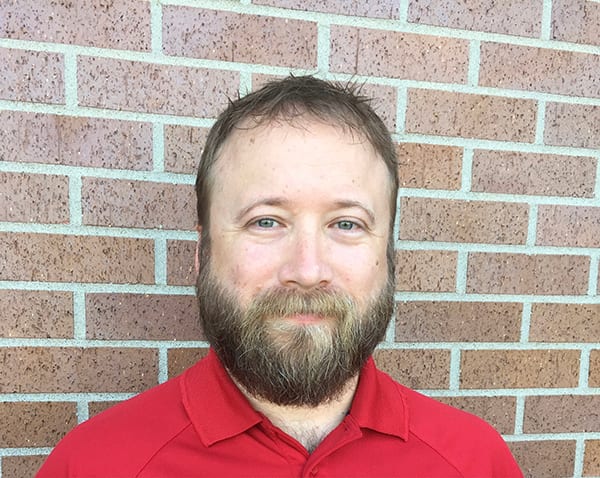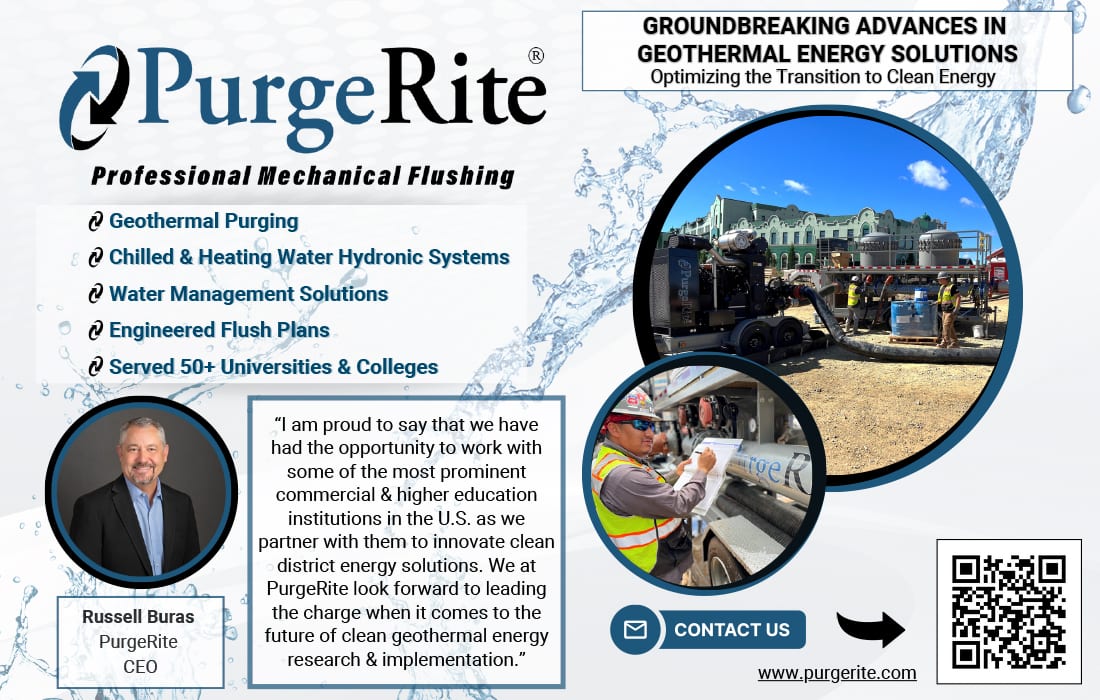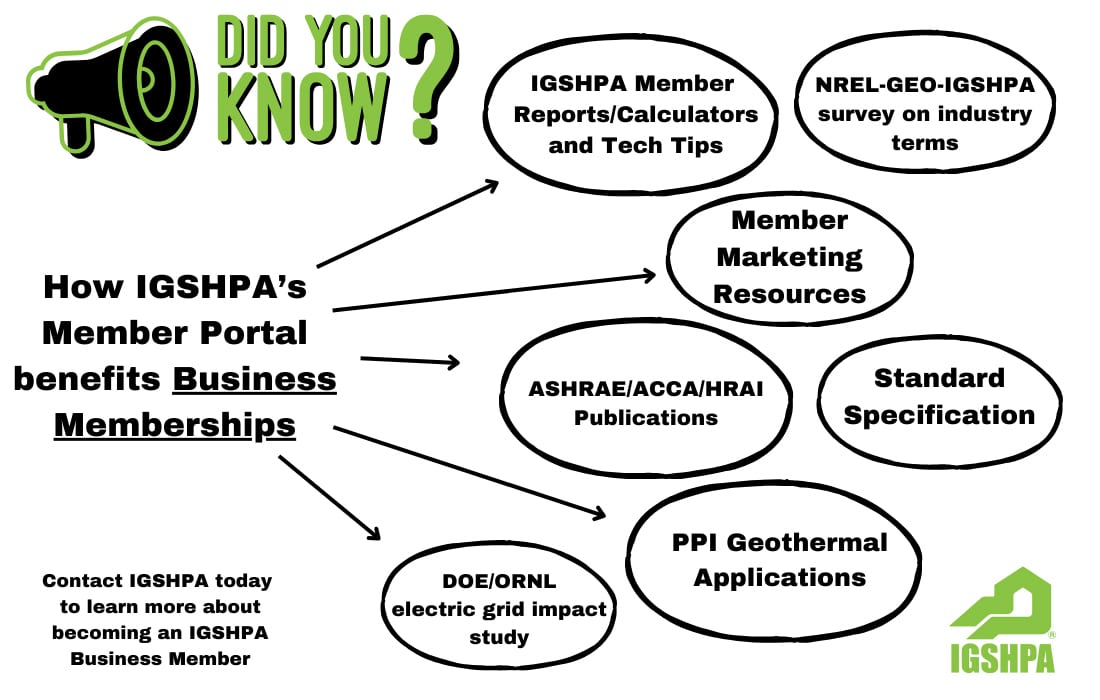
Cooperative Loop Programs
CKenergy is an electric cooperative serving about 28,000 meters in 10 Oklahoma counties, just west of Oklahoma City. In 2005, the cooperative rolled out a geothermal heat pump rebate program at $600 per ton and increased the rebate to $1,000 per ton in 2011. The popular program was effective in reducing peak demand and associated peak costs with its wholesale power supplier, Western Farmers Electric Cooperative.
Nevertheless, CKenergy needed additional improvements in its system load factor to drive further power cost reductions. Load factor is a ratio that relates total electricity consumption in kilowatt-hours in a time period to peak demand in kilowatts.
Boyd Lee, CKenergy’s Director of Strategic Planning, recognized that if the cooperative were to pay for and own the loops, geothermal would become much more affordable for members and potentially drive more adoption. He developed a spreadsheet to demonstrate how investing in loop ownership could generate tens of millions of dollars for the cooperative in the long term by reducing demand peaks and increasing electric sales.
“I did the math and realized that if we deploy geothermal in thousands of locations, our system load factor in the residential rate class would greatly improve and become a huge financial gain for the members,” said Lee.
Lee presented the spreadsheet to the cooperative’s board, which quickly agreed to pursue the idea.
Program Development and Roll-Out
According to Lee, an important initial step in rolling out the loop ownership program was securing buy-in from local contractors, including the HVAC companies and the contractors that drill wells and install geothermal loop systems. He convened contractors in a series of meetings and provided steak dinners.
“The cooperative has to be bold about how it approaches the local contractors,” said Lee. “You have to be clear with them that the cooperative is moving forward with the program and that they will all get work through it.”
Lee outlined the entire program for the contractors and invited them to participate by being added to a preferred contractor’s list. He told them that they would be removed from the list if they didn’t do high-quality work.
“I’d rather the cooperative pays a little more money on the heat pump rebate for an appropriately sized heat pump so that the member is happy,” said Lee. “And I want the cooperative to pay for a more robust loop if that’s what it takes to do the job right and install a system that works for a long time.”
Lee asked the contractors to keep their pricing as close to one another as possible so that the work would be evenly distributed among them. At the same time, he made it clear that he wasn’t asking them to fix their prices.
The contractors brought up several minor concerns that Lee hadn’t considered, and Lee modified the program to address the concerns.
Lee arranged separate meetings with HVAC distributors and manufacturers to discuss the plans for the geothermal program. When he told these companies that CKenergy would be paying for and owning the loops, they were willing to provide better pricing.
“The fact that we were putting in a big chunk of money for the loops gave us credibility, so they tightened up their belts as best as they could,” said Lee. “We were able to get geothermal heat pumps cheaper than air source heat pumps, which is not typical.”
In 2015, CKenergy launched its new Geothermal Program, which pays for the loop’s capital and installation costs and provides a $1,000 per ton heat pump rebate.
Cost Recovery
Lee developed several approaches that enabled the cooperative to recover the capital and installation costs associated with the loops. First, a rate rider was added to all members’ utility bills. The rider spreads annual loop investment costs across every kilowatt-hour sold to its members over a 12-month period. Because of the large number of kilowatt-hours, the amount of the rider is miniscule and has a negligible effect on members’ bills. For example, if the cooperative were to invest $1 million in loops in a certain year, the rate rider would be 0.0016 cents per kilowatt-hour.
The rider is also known as a “margin stabilization factor,” which means that it stabilizes the cooperative’s margin without incurring debt. Because the rider returns all capital and installation costs to the cooperative within a year, the cooperative does not need to set aside a budget for loop expenses.
Program participants are placed on a special geothermal rate. The kilowatt-hour costs at this rate are about 1 cent lower than the standard residential rate—about 10% cheaper. The cooperative made the geothermal rate lower because geothermal heating and cooling translate into lower wholesale power costs for the cooperative than conventional heating and cooling.
A monthly loop fee of $25 is built into the geothermal rate. This fee, which stays with the house for 30 years, was designed to recover the loop investment costs. Even with the loop fee, geothermal participants still have lower monthly bills than non-geothermal members. Operations and maintenance costs for the loops have been negligible to date.
Program Participation
As of September 2022, there were about 1,450 members in the program—or just under 10% of the cooperative’s membership. 1,425 of these participants are residential members while 25 are commercial members. The cooperative has invested a total of about $13.5 million in the loops.
About 60% of the installed systems are in new homes while 40% are retrofits. “When you cover the loop costs and also provide a rebate on the indoor equipment, it’s a no-brainer for most people that are building a new house in our service area,” said Lee.
Only one participant has expressed dissatisfaction with the geothermal system. “Many members have said it’s the best decision they ever made,” said Lee.
Training has also equipped the staff to evaluate the design and installation quality of the geothermal systems. CKenergy requires contractors to submit load and loop design calculations as well as a well map, and the staff reviews these documents for quality and accuracy. “After we approve the submissions, we send the contractors the rebate checks, and they pass on the value of the rebate to their customers,” said Lee.
Marketing and Promotion
CKenergy doesn’t need to do much marketing for the geothermal program because the HVAC contractors promote it.
“Once the contractors figured out how the program works and how much additional revenue geothermal projects can potentially bring in, they’ve gotten serious about promoting geothermal and our program,” said Lee. “We hardly ever have a contractor that goes out to a customer’s home and doesn’t leave with a geothermal sale.”
Shortly after the program’s launch, an important early catalyst was a decision by two new residential developments to install geothermal systems in all the homes and take advantage of CKenergy’s program. The local press covered the story, and the program took off quickly without much advertising.

Geothermal Staff Team
Three CKenergy staff members have job responsibilities related to the geothermal program: Lee provides oversight, one other staff focus on member sales, and one person works on rate design and analytics.
The rate design work ensures that the program recovers the cost of service, including the wholesale power costs associated with the geothermal systems. “We want to reward participants enough to incentivize their participation, but not over-reward them and shift costs to other classes,” said Lee.
All three staff members are knowledgeable about geothermal. Lee’s expertise dates back to the 1980s, when he studied geothermal installation at Oklahoma State University. In the mid 1980s at Oklahoma Electric Cooperative, he launched and operated a heat pump rebate program. In the 1990s at Alfalfa Electric Cooperative, he started a subsidiary that installs geothermal systems because there were no local contractors with geothermal experience. He has been a member of the International Ground Source Heat Pump Association since 1984.
The other two staff members have attended various training programs offered by geothermal manufacturers, arming them with the knowledge to handle member inquiries.
“To be successful in this, cooperative has to have staff on board that understand geothermal well,” said Lee. “They have to be able to answer questions and be believable. It’s not enough just to be a salesman.”
Financial Benefits for CKenergy
The geothermal program has turned the cooperative’s loop investments into a long-term money maker. According to Lee, the 1,650 geothermal systems installed as of today represent approximately $1,200,000 per year in additional margin for the cooperative—or $30 million in additional margin assuming a 30-year loop lifetime. While loops can last for up to 100 years, CKenergy uses 30 years as a reference because the cooperative depreciates all its assets (including poles and wires) over a 30-year period.
The additional margin is comprised of three components, roughly in equal thirds. The first component is the $25 monthly loop fee incorporated in participants’ monthly bills. The second is increased electric sales for space and water heating from retrofits that converted from conventional natural gas systems to electric systems. For new residential construction, the program has driven additional electric sales by deploying geothermal systems in homes that would otherwise have had natural gas-powered HVAC systems. The geothermal program will generate additional sales for the life of the loops.
Peak demand reductions represent the third component of the additional margin. Geothermal installations have reduced the cooperative’s 150-megawatt summer system peak and 125-megawatt winter system peak by 3.9 megawatts. There is an additional winter demand reduction because most geothermal heat pumps in the region do not need to use supplemental resistance heating, even during cold spells. Consistent geothermal-driven demand reductions throughout the year translate into significantly lower peak demand costs associated with the 12 monthly coincident demand peaks of Western Farmers Electric Cooperative, the wholesale power supplier.
The increased electric sales and reduced demand have significantly improved the cooperative’s system load factor. This in turn reduces the cost of power and defers the need for rate increases.
While the loop investment is returned to the cooperative within a year without incurring debt, other utility infrastructure investments in poles and wires are typically financed over 30 years. In contrast with these traditional investments, the geothermal program will make future generations’ rates lower because the cooperative will not need to pay for debt created by investments 20 or 30 years ago.
“Another way to look at $30 million in additional margin—and what I like to tell the board—is that if you don’t do this program, you will need to increase your rates by $30 million over the next 30 years, and that’s only taking into account what we’ve installed so far. It will multiply with more installations,” said Lee. “So, this program is significantly reducing our members’ future costs.”
On multiple occasions during the first few years of the loop ownership program, the board asked Lee why CKenergy was one of the few cooperatives with such a program. In response, Lee would show them the increased margins due to geothermal adoption. This helped to maintain the board’s confidence in the program.
Ownership Change
In 2022 the cooperative’s general manager—who is also an accountant—decided to change the loop ownership structure. Instead of the cooperative paying for and owning the loops, the cooperative pays for the loop and transfers ownership to the homeowner immediately after installation. With this approach, the homeowner is responsible for maintenance and can claim tax advantages or additional property values associated with loop. The cooperative continues to own the 1,500 loops that were already deployed at the time of this change.
The rationale for the decision was to remove the long-term liability associated with the potential need to repair loops. “We don’t have to worry that somebody may accidentally cut a loop in 25 years, and we need to hire a contractor to fix it,” said Lee.
Lee frames the new ownership model as a way for members to support their own economic well-being. “Because the members are the cooperative’s owners, they are basically buying the loops for the program participants,” he said. “They’re purchasing assets that generate margins for all the members.”
A Final Thought
When reflecting on the geothermal program’s history, Lee has realized that his mindset has played an important role in its enormous success. “The most important aspect of launching a geothermal program is your attitude going into it,” said Lee. “You can’t look at it as work. You must look at it as improving your cooperative and the lives of your members.”
About GeoExchange
The Geothermal Exchange Organization (GeoExchange) is the Voice of the Geothermal Heat Pump (GHP) Industry. Our mission is to promote sustainable growth of the GHP market by removing barriers to adoption and fostering awareness of the many benefits of GHP technology.
GHPs are the most efficient heating and cooling systems in existence, and they are a renewable environmentally friendly way to meet the needs of homes and businesses around the country. GeoExchange engages a wide variety of stakeholders at the federal, state, and local levels and advocates for policies and programs to increase adoption.
Please contact us to learn more about how you can Go Geo! We have a wealth of resources available to assist with planning systems of all sizes and configurations. From a small single-family home to a large and complex commercial installation, GeoExchange pros can help you through every step in the process. We look forward to helping guide you on your geothermal journey!
Geothermal. ExchangeOrganization
312 S. 4th St., Ste. 100
Springfield, IL 62701
(217) 572-1261
info@geoexchange.org
https://www.geoexchange.org
https://missiongeo.org/

CKenergy - Fast Facts
CKenergy Geothermal Program: https://www.ckenergy.coop/energy-efficiency-geothermals
Program Launch: 2015
Objectives: Improve system load factor, reduce peak demand, reduce rates for members, increase member satisfaction, increase electricity sales and revenue
Loop Ownership: Cooperative covers capital and installation costs and transfers ownership to members immediately after installation
Cost Recovery: Small rate rider applied to all members’ bills; $25 loop fee applied to program participants’ monthly bills
Rates: Participants placed on a special geothermal rate that is 10% less than residential rate
Heat Pump Rebate: $3,625 per ton
Number of Participants: 1,650
Summer and Winter Peak Demand Reduction: 3.9 megawatts
Financial Benefits for Cooperative: $1,200,000 per year in additional margin. Margins will increase with continued installations.
IMAGE CREDIT: SimonSkafar / Royalty-free / iStock / Getty Images Plus



